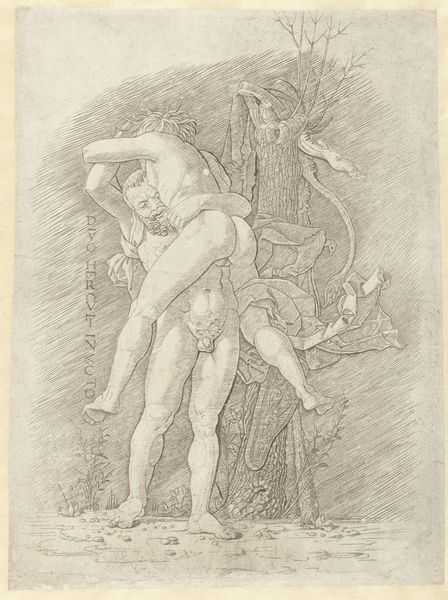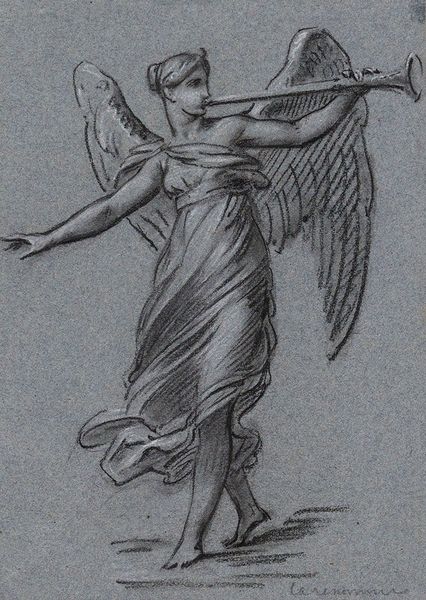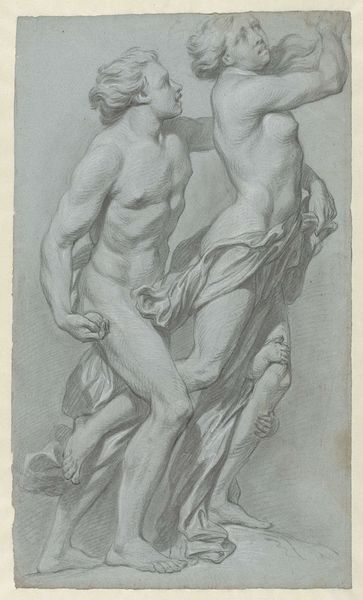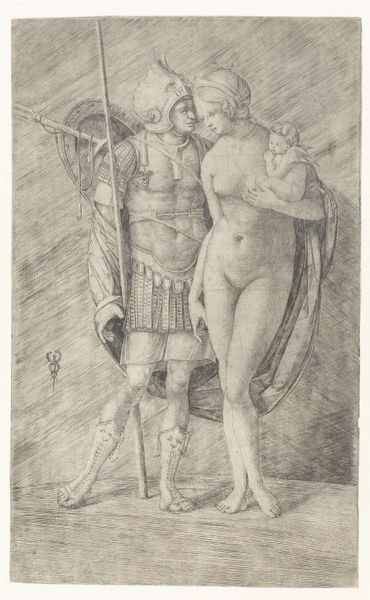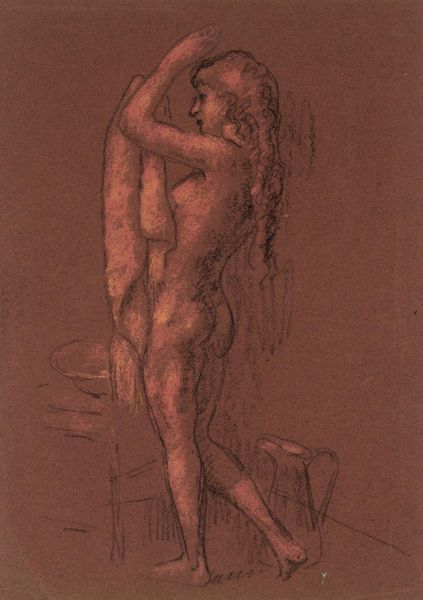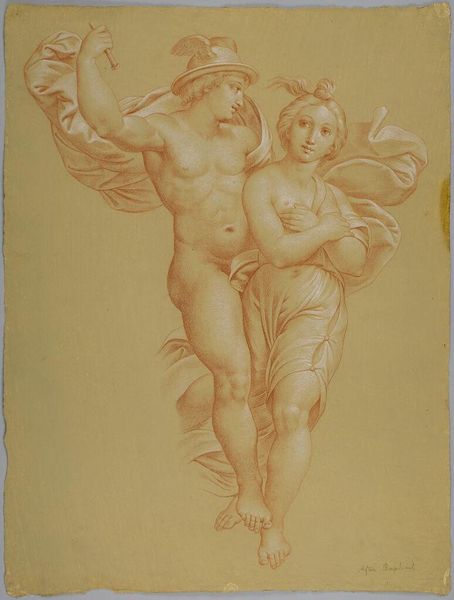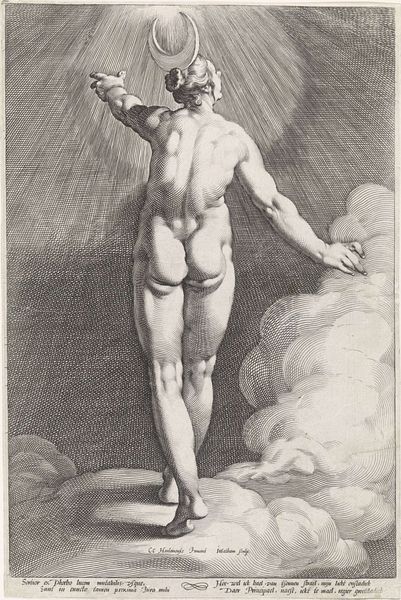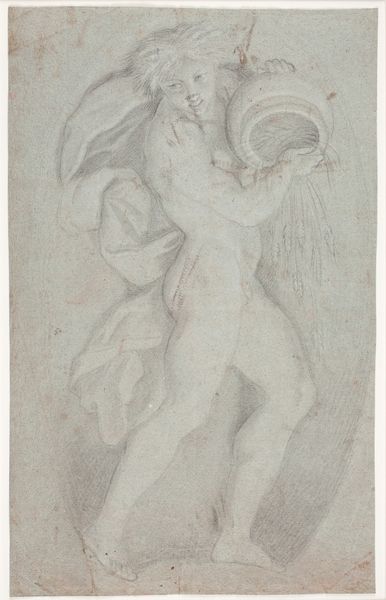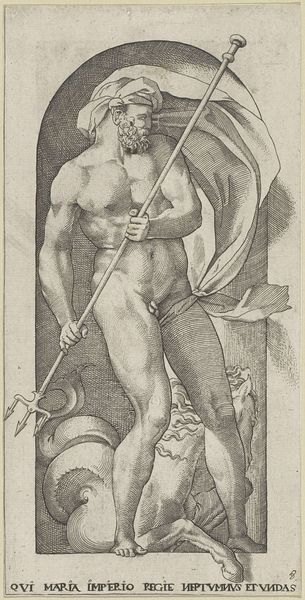
drawing, pencil
#
pencil drawn
#
drawing
#
neoclacissism
#
allegory
#
charcoal drawing
#
figuration
#
pencil drawing
#
geometric
#
classicism
#
pencil
#
portrait drawing
#
history-painting
#
nude
Dimensions: height 482 mm, width 355 mm
Copyright: Rijks Museum: Open Domain
Curator: I find the poised stillness quite compelling. What do you make of it? Editor: Immediately, the use of light and shadow strikes me. It’s a subtle, almost dreamlike depiction. Curator: This is "Study for a Statue of Cupid Drawing His Bow," attributed to Jean Grandjean, created sometime between 1765 and 1781. Note the medium: pencil on paper. The textures achievable through this common medium are amazing. Editor: Agreed. Look at the varied densities of pencil strokes used to articulate the muscular form and feathered wings. But let's think beyond the material. Cupid, in this depiction, it transcends mere allegory. The stance embodies latent power and intention. The symbolism is quite forceful. Curator: Fascinating. To your point about transcending allegory, this drawing functions not just as a preparatory sketch, but as an artifact, embedded within a complex social context of artistic production and apprenticeship. It demonstrates neoclassical ideals and reflects the laborious process of artistic training at the time. Editor: You are right. Yet the essence lies in the visual experience. The artist’s ability to capture the subject is fascinating in how this all relates to classicism and proportion! Note how this work evokes a lineage of Greco-Roman sculpture. It also emphasizes a pursuit of ideal beauty. The surface itself provides an almost cool emotion. Curator: But wasn't that cooling effect carefully manufactured by artistic choices shaped by the historical context, the client's aspirations, and the labor involved? Consider how prints made art more democratic; drawing was central for sharing classical ideals. Editor: Of course, of course! These are definitely key parts in viewing such neoclassical artistry. All those classical statues from Greece and Rome become copied over and over in drawings. Yet this approach gives a different kind of viewpoint into understanding a mythological topic such as Cupid and its role in the fine arts. Curator: So, is the drawing perhaps reflecting both the materiality and intellectual exchange and the historical artistic value and practice during its time? Editor: An astute summary of our discussion and its role as more than just preparatory visual expression for its aesthetic value!
Comments
No comments
Be the first to comment and join the conversation on the ultimate creative platform.

